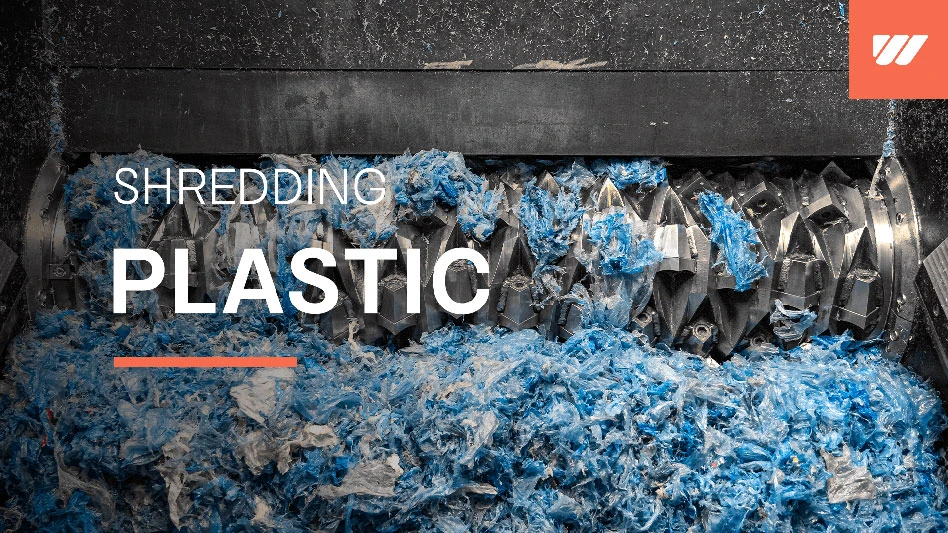The recycling industry has been playing its role to reduce America’s trade deficit, filling up a considerable number of containers with scrap metal, paper and plastic.
Among the secondary commodities filling up those containers in the past several years has been copper and brass scrap, most often destined for Asia.
Figures gathered and published by the Copper Development Association (CDA), New York, show a pattern of increased export activity that has often moved in tandem with lower copper scrap consumption figures in the United States.
SOME HOME FIRES NOT BURNING
The CDA, in the preface to its 2010 data compilation “Copper Supply & Consumption: 1989-2009,” notes that its figures come from the Bureau of the Census and the United States Geological Survey (USGS) as well as from its own research.
Some of the compiled data focuses on copper mining output and primary copper production, but much of it also delves into production at facilities that melt copper scrap (such as brass mills and ingot makers) as well as copper scrap export flows.
Figures for 2009 show that nearly 2 million tons of copper scrap was generated in the United States in 2009 (1.99 million tons). Of this total, some 1.16 million tons was exported, and only 830,000 tons of domestically generated copper-bearing scrap was melted at facilities in the United States.
That 60/40 split marks the continuation of a trend toward the share of domestic consumption shrinking in the face of Asia’s growing role as the manufacturing workshop for the world.
It also is reflective of the end of scrap-based smelter production in the United States during those two decades. Each year from 1989 to 1996, some 330,000 to 450,000 tons of copper was smelted from scrap metal in the United States.
But a combination of economic and environmental pressures caused the few remaining smelters contributing to that total to shut down between 1997 and 2001. USGS Commodity Specialist Daniel Edelstein wrote in his review of the copper industry in 2001, “At the end of October 2001, Chemetco Inc. abruptly closed its secondary copper smelter near Hartford, Ill. Chemetco, with a capacity of about 135,000 tons per year of copper anode [production], was the last dedicated secondary copper smelter operating in the United States. It processed a variety of copper materials, including radiators, No. 2 copper and low-grade residues.”
Production at brass mills, ingot makers and wire mills in the United States, many of which melt copper-bearing scrap, has not disappeared but remains cyclical, most closely following trends in the construction market.
The production of brass mill products in the United States grew steadily from 1995 to 2000, reaching a peak of more than 4 million tons of production in 2000. The annual figure shrank from 2001 to 2003 but began rising again in 2005 and 2006 as the construction industry prospered.
Brass production from 2007 to 2009, however, showed an alarming reduction trend, all the way down to 1.88 million tons produced in 2009.
The consumption of copper-based scrap in the United States has followed a similar trend, with a pattern of decline tracing back to 1997, when 1.53 million tons of scrap was consumed, through to 2009, when just 830,000 tons of copper-bearing scrap was melted domestically.
RED HOT CHINA
The decline in domestic copper products manufacturing has caused scrap recyclers in the United States to look outward, where they can find a number of overseas markets hungry for the material.
During those same years that domestic smelters and mills were melting less copper-bearing scrap, the export market absorbed more and more red metal scrap.
In a mere 11 years, the amount of red metal scrap that was shipped out of the United States grew by a multiple of seven—from 157,000 tons in 1999 to 1.16 million tons in 2009.
Global trade in red metal scrap is not a new phenomenon. But the surge in volume of scrap heading offshore and the preponderance of it heading to one destination—China—has caused widespread scrap industry change in the past decade.
By 2000, China was already the leading destination for red metal scrap exports from the United States. U.S. Census Bureau figures published by the USGS show that China imported more than 200,000 metric tons of copper-bearing scrap from the United States in 2000.
That figure far outpaced the second- and third-leading destinations that year: Canada (less than 87,000 metric tons) and South Korea (slightly more than 60,000 metric tons).
Figures for 2008 show China as having widened its lead considerably in the following years. In 2008, China imported more than 600,000 metric tons of red metal scrap from the United States (or closer to 675,000 metric tons if Hong Kong figures are included). The nations in second and third place in 2008 were again Canada (48,800 metric tons) and South Korea (41,700 metric tons).
China’s mass consumption of imported red metal scrap means the subject is a foremost topic on the agenda at the China Nonferrous Metals Industry Association Recycling Branch (CMRA) Forum, which is held annually each fall in China.
At the 2010 event, held in November in Ningbo, Wang Gongmin, president of the CMRA, provided an overview of nonferrous metals industry growth in China. “In the first three quarters of 2010, China has imported 5.37 million tons of [nonferrous] scrap metals, an increase of 11.6 percent year-on-year,” he said.
Of that total, “copper-containing scrap is 3.22 million tons [and] aluminum-containing scrap is 2.15 million tons, up 7.7 percent and 18 percent respectively,” Wang added.
Also speaking at that event, Mike Jackson, director of nonferrous sales at Commercial Metals Co. (CMC), Irving, Texas, said CMC foresaw strong copper demand in Asia continuing and suppliers straining to keep up in 2011.
Jackson said that although many economies in the developed world are “stuttering and uncertain,” growth in Asia will continue to strain supply. “There is a global supply deficit projected” in 2011, he commented.
Speaker Michael Lion, chairman and board director of Australia-based Sims Metal Management, said he was “bullish for the most part” on nonferrous metals and that “copper’s strength is tied to fundamentals in the market.”
Lion cited China’s ongoing growth and hunger for copper as the key fundamental on the demand side and the lack of new mining and production capacity investment in the 1980s and 1990s as the key factor on the supply side.
Industry analyst Ming Feng of Shenzhen, China-based China International Futures Co. Ltd., said the strength in copper pricing had been underpinned by economic growth in Asia and, up until late 2008, healthy economies in the rest of the world.
He noted, though, that “the economy is not picking up fast” in the United States” and the job market in the U.S. “is not dynamic enough.” Ming added, however, “the U.S. economy has the ability of self-repairing.”
Demand in China may also have reached a peak, said Ming. “The pace of economic growth will slow down in China” under the 12th Five-Year Plan, he commented. Also, “the real rate of [infrastructure and real estate] investment started slowing down in 2009 [and] raw material demand has slowed down for most commodities except oil.
“The [weakness of] the U.S. dollar is the main driver of the current copper market,” said Ming.
He concluded by saying copper may hit a medium-term trough in pricing as the recent boom winds down, but that in the long-term market fundamentals would keep copper trading at a high range beyond where it was before the economies of China and other nations roared to life.
THE CLEAR SKIES FACTOR
The statistics portraying China’s metals production growth only tell part of the story, according to another speaker at the 2010 CMRA event.
At the same time that production of aluminum and zinc has been climbing, energy consumption in those sectors has actually declined, said Shang Fushan, vice president of the China Nonferrous Metals Industry Association (CNIA).
Shang also credited producers of copper and aluminum with diversifying their range of products, such as one aluminum company that has pioneered China’s production of a “super-thin foil.” China’s aluminum industry was also developing a better capability to produce high-end aluminum alloys used in the automotive and rail industries, said Shang.
China’s “resource reservoir” continued to grow, said Shang. He estimated that China now had some 77 million tons of copper in various forms at its disposal, and it was working with overseas suppliers in nations such as Zambia, Afghanistan and Canada to continue to boost that reservoir.
“The elimination of backward technologies” will remain a priority, said Shang, who noted that some producers of lead and zinc in particular had to overcome a “green barrier” if they wished to stay in business.
Shang said China’s 12th Five-Year Plan and the nation’s Circular Economy agenda would work in tandem to support energy-efficient, environmentally sound facilities and put pressure on the others. “All lagging production capacities will be eliminated,” he stated.
Wang Gongmin, president of the CMRA, also pointed to the Circular Economy initiative as one that will bolster “the recycling of resources and metal [and] the urban mining industry.”
He said, “We will move forward with the construction of Circular Economy pilot projects, urban mineral pilot sites and recycling systems [for] renewable resources. Subsequently, we will build an efficient recycling system of renewable resources with a rational layout.”
The Chinese copper industry of the near future may be more environmentally friendly and resource-efficient, but Wang also said he thought it would remain significant in size. “By 2015, nonferrous metals production shall reach 11.1 million tons,” he told CMRA forum attendees, “of which secondary copper is 3.8 million tons.”
That figure, he added, was in line with a central government goal to have secondary refined copper make up 40 percent of all the copper produced in China by 2015.
The author is editor-in-chief of Recycling Today and can be contacted at btaylor@gie.net.
Get curated news on YOUR industry.
Enter your email to receive our newsletters.
Explore the January 2011 Issue
Check out more from this issue and find your next story to read.
Latest from Recycling Today
- Reconomy Close the Gap campaign highlights need for circularity
- Nickel carbonate added to Aqua Metals’ portfolio
- EuRIC, FEAD say End-Of-Life Vehicle Regulation presents opportunity for recyclers
- Recyclers likely to feel effects of US-China trade war
- BCMRC 2025 session preview: Navigating battery recycling legislation and regulations
- Yanmar Compact Equipment North America appoints new president
- LYB publishes 2024 sustainability report
- Plum Creek Environmental acquires Custom Installation LLC







